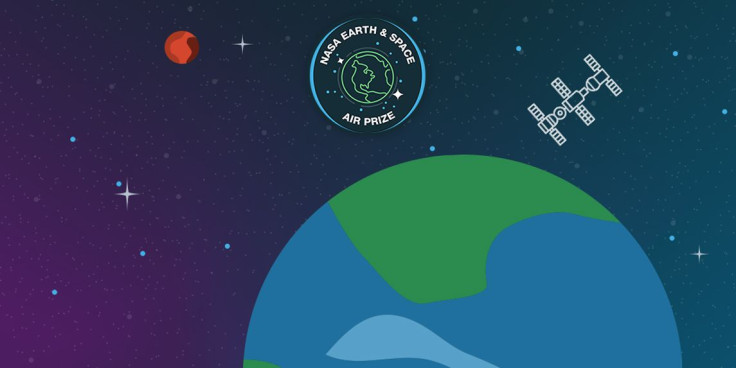NASA Holding $100,000 Competition For Aerosol Sensor That Works In Space

Even as human activity creates increasing amounts of pollution and adds more particulate matter to the atmosphere, there is one place where breathing is a lot more difficult than the most polluted cities on Earth: space. And both on the planet and in space, humans need clean air to survive.
In a bid to ensure that astronauts in space, as well as everyone else on Earth, can have access to clean air, NASA has partnered with the Robert Wood Johnson Foundation (RWJF) — a large philanthropy dedicated solely to health — to sponsor the Earth and Space Air Prize competition. The goal is to create “a solution that could improve air quality and health in space and on Earth,” according to a NASA statement Tuesday that announced the opening of the competition, which has a total prize money of $250,000.
The competition is being held primarily because current technology to monitor aerosols — very fine solid particles or liquid droplets suspended in a gaseous medium — has limitations and is not very effective, and doesn’t always work well in the micro-gravity environment of space.
“Particulate monitoring is a gap in NASA’s technology roadmap to enable future long-term missions. Current aerosol instrument technology is too large. It doesn’t offer the necessary level of sensitivity or longevity, along with the ability to operate in reduced-gravity. Using this collaboration with RWJF, we have an incredible opportunity to close this gap,” Paul Mudgett from NASA’s Biomedical Research and Environment Sciences Division said in another statement Tuesday.
NASA said in the same statement the competition was “a technology innovation challenge to promote development of robust, durable, inexpensive, efficient, lightweight, and easy-to-use aerosol sensors for space and Earth environments. The competition asks teams or individuals to design and develop specialized sensor technology that has the potential to be useful in spaceflight as well as on Earth anywhere outdoors in a community where people may be exposed to airborne particles.”
How exactly does the competition work? Entries are open now and registrations to participate can be made on the prize’s website till Dec. 13. In the first phase of the contest, participants are to submit a sensor design by Jan. 31, and based on those initial submissions, three finalists will be chosen to enter the second phase, and they will be announced late March.
All three finalists will be given $50,000 each to build a functional prototype based on their designs, which must be submitted by Sept. 30, 2018, to the Glenn Research Center in Cleveland, Ohio. At that facility, the prototypes will be tested and evaluated, and the winner of the grand prize of the remaining $100,000 will be announced mid-October.
“We’re grateful for this unique opportunity to collaborate with NASA to support innovation that will help to build a Culture of Health both on Earth and in space,” Michael Painter, senior program officer at RWJF, said in the statement.
Other information about the competition, such as the scoring process, the judges and more rules, can all be found on the prize’s website.
© Copyright IBTimes 2024. All rights reserved.





















